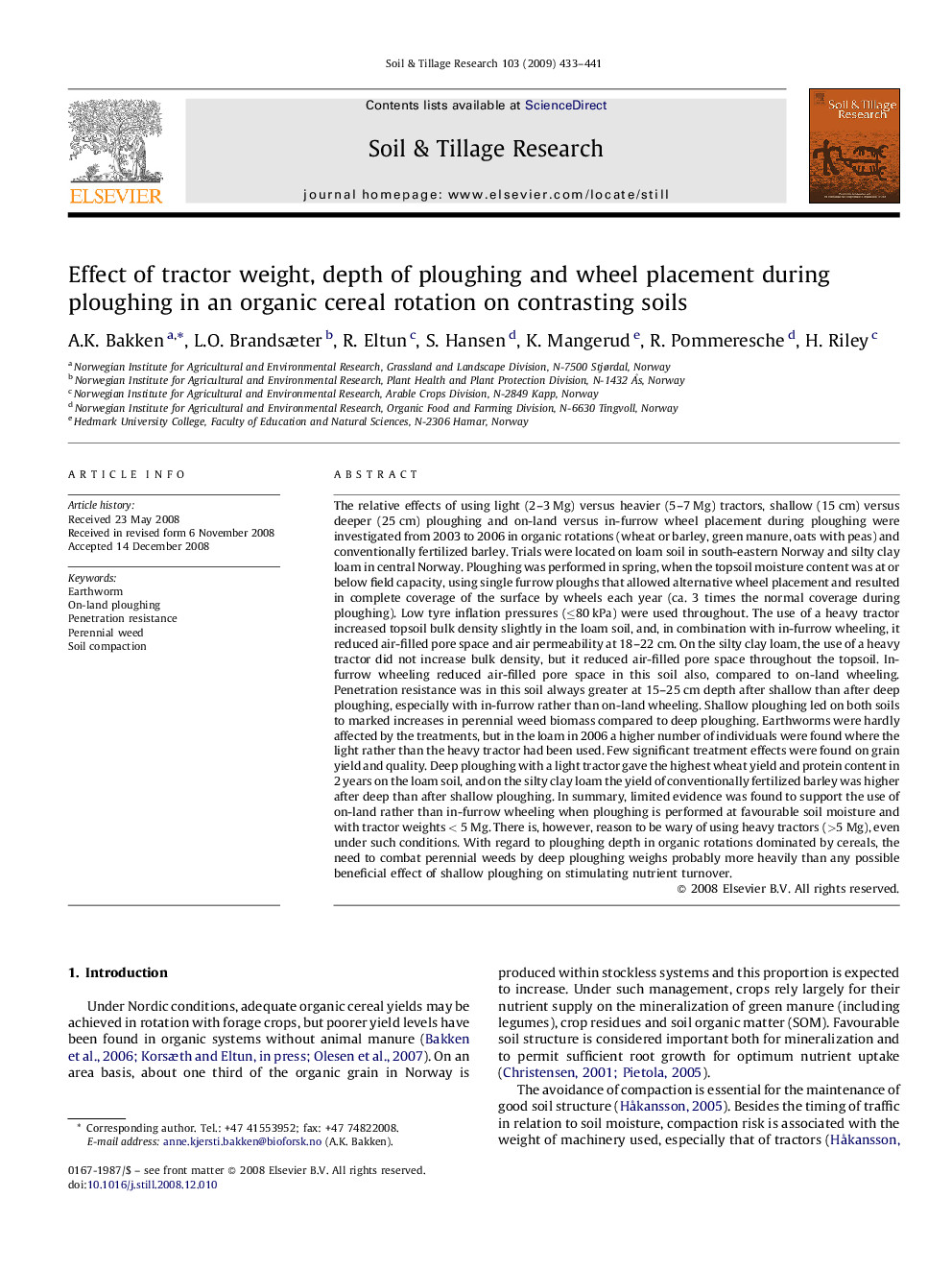| Article ID | Journal | Published Year | Pages | File Type |
|---|---|---|---|---|
| 306341 | Soil and Tillage Research | 2009 | 9 Pages |
The relative effects of using light (2–3 Mg) versus heavier (5–7 Mg) tractors, shallow (15 cm) versus deeper (25 cm) ploughing and on-land versus in-furrow wheel placement during ploughing were investigated from 2003 to 2006 in organic rotations (wheat or barley, green manure, oats with peas) and conventionally fertilized barley. Trials were located on loam soil in south-eastern Norway and silty clay loam in central Norway. Ploughing was performed in spring, when the topsoil moisture content was at or below field capacity, using single furrow ploughs that allowed alternative wheel placement and resulted in complete coverage of the surface by wheels each year (ca. 3 times the normal coverage during ploughing). Low tyre inflation pressures (≤80 kPa) were used throughout. The use of a heavy tractor increased topsoil bulk density slightly in the loam soil, and, in combination with in-furrow wheeling, it reduced air-filled pore space and air permeability at 18–22 cm. On the silty clay loam, the use of a heavy tractor did not increase bulk density, but it reduced air-filled pore space throughout the topsoil. In-furrow wheeling reduced air-filled pore space in this soil also, compared to on-land wheeling. Penetration resistance was in this soil always greater at 15–25 cm depth after shallow than after deep ploughing, especially with in-furrow rather than on-land wheeling. Shallow ploughing led on both soils to marked increases in perennial weed biomass compared to deep ploughing. Earthworms were hardly affected by the treatments, but in the loam in 2006 a higher number of individuals were found where the light rather than the heavy tractor had been used. Few significant treatment effects were found on grain yield and quality. Deep ploughing with a light tractor gave the highest wheat yield and protein content in 2 years on the loam soil, and on the silty clay loam the yield of conventionally fertilized barley was higher after deep than after shallow ploughing. In summary, limited evidence was found to support the use of on-land rather than in-furrow wheeling when ploughing is performed at favourable soil moisture and with tractor weights < 5 Mg. There is, however, reason to be wary of using heavy tractors (>5 Mg), even under such conditions. With regard to ploughing depth in organic rotations dominated by cereals, the need to combat perennial weeds by deep ploughing weighs probably more heavily than any possible beneficial effect of shallow ploughing on stimulating nutrient turnover.
